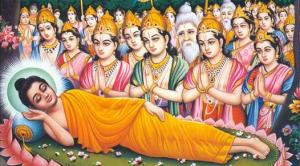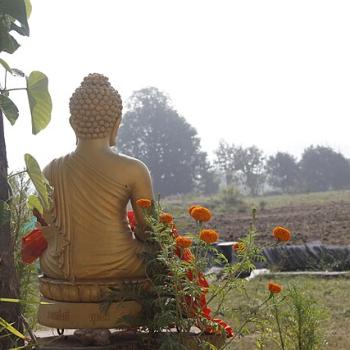In various parts of East Asian Buddhism today, the 15th of February (for some the 8th) is marked out to observe the death of Gautama Siddhartha, the historic Buddha. The occasion is called Nirvana day or Parinirvana day or, in Japanese Buddhism Nihan-e. Many Western Zen communities spend the day or sometimes the week in meditation.
According to tradition the Buddha was eighty years old when he died. His long life was dedicated to a great search, a finding, and then forty years of teaching. The stories say as he fell with his final illness at Kusinagara he lay on a bed made for him between two Sala trees, his head facing north, his face turned to the west. Of course, of course, flowers endlessly bloomed on the tree, falling and replacing.
Of course, being who he was, shortly before he died he delivered a final sermon.
The Theravada version is no doubt closer to the actual Buddha, at least chronologically. According to one source cited at Wikipedia it could even date from as near as a generation or two from the time of the Buddha. Although, not written down until much later, somewhere near the beginning of the common era.
The Mahayana version is less concerned with matters of historicity. It’s earliest strata may date from the first century of the common era, but doesn’t come into full shape until the fifth century. It is essentially a Chinese text, and is critical for its development of the teachings of our original Buddha nature.
I find the two documents are each worth reading. They give some answers. They invite many questions.













